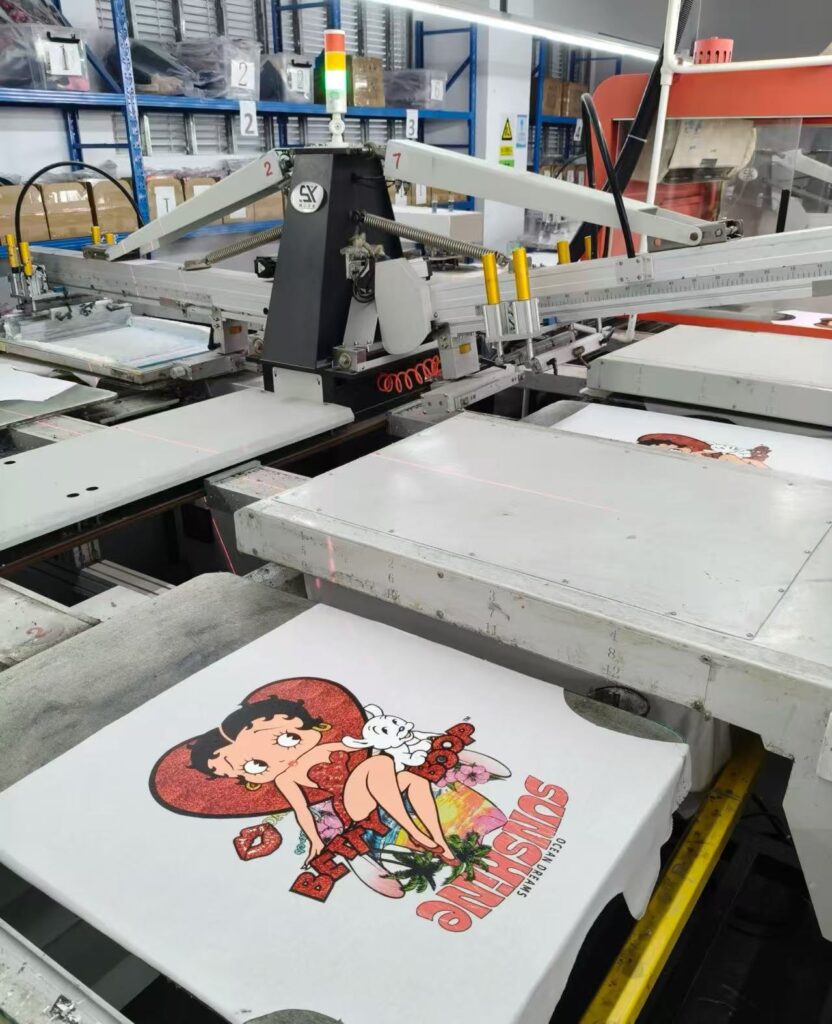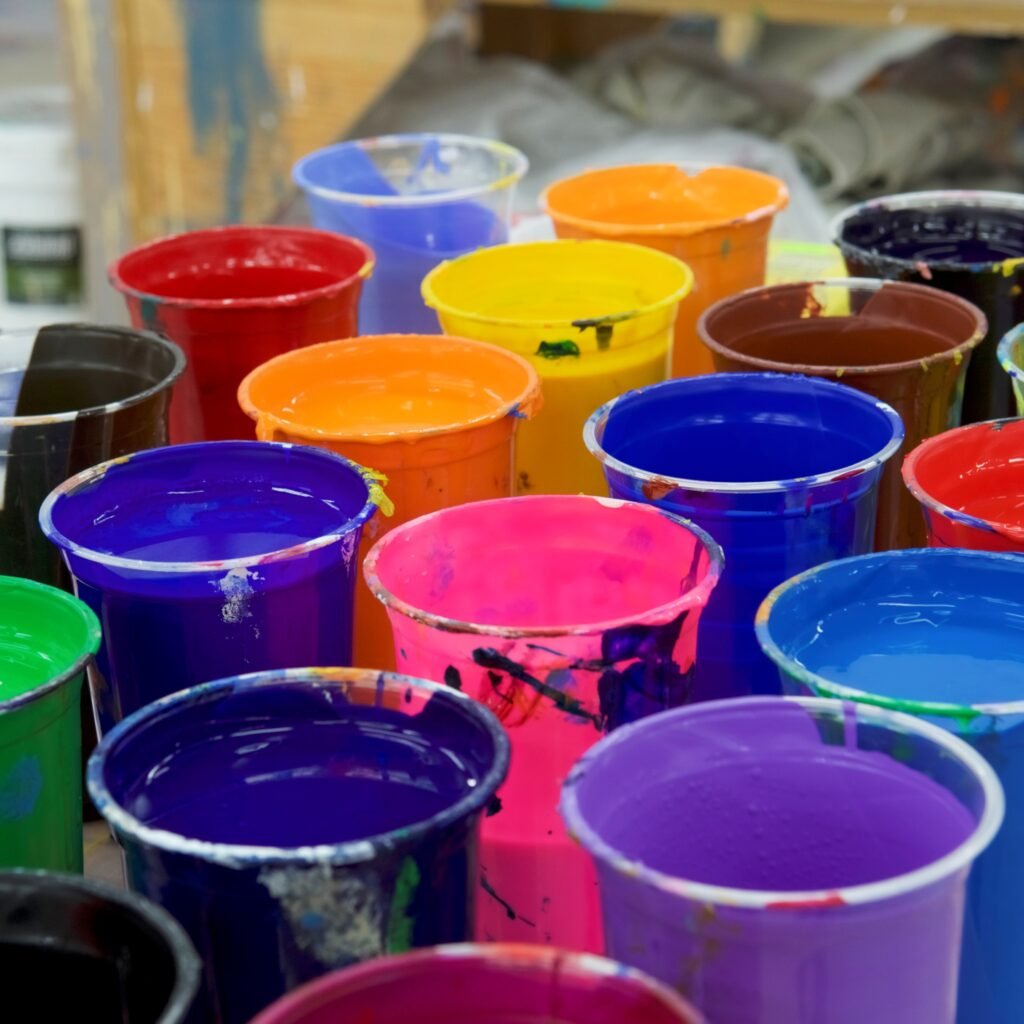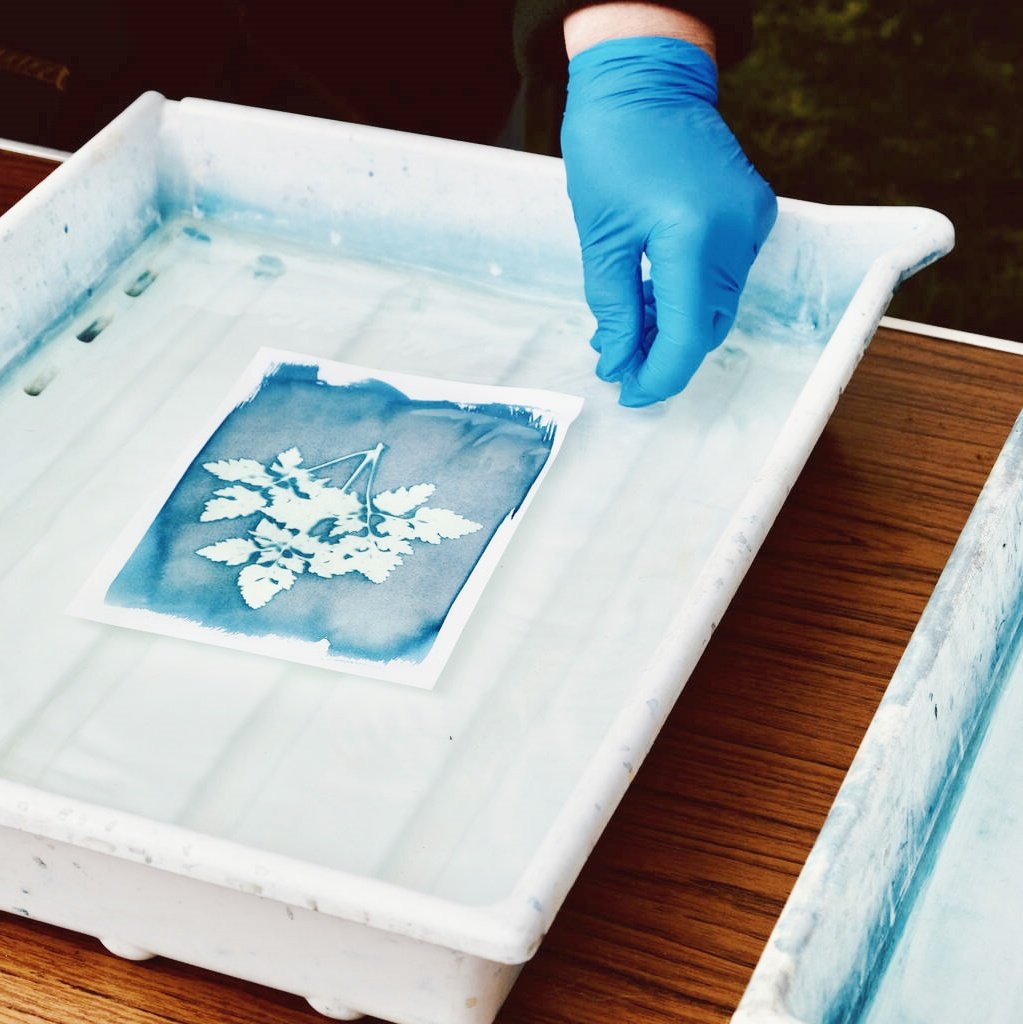כשמדובר בתחום הדפסת התצוגה, בחירת הדיו היא אחת ההחלטות החשובות והמשפיעות ביותר שתעשו. היא משפיעה על הכל, החל ממגע הבגד הסופי ועד למורכבות תהליך ההדפסה שלכם. אלופי הדפוס המכהנים הם דיו פלסטיסול ודיו על בסיס מים. הוויכוח הגדול בין דיו על בסיס מים לבין דיו פלסטיסול נמשך כבר שנים, כאשר לכל סוג דיו יש מעריצים מסורים ותוכניות ייחודיות בהן הוא ללא ספק זורח. מאמר זה ישמש כמדריך הסופי שלכם, יפרק את ההבדלים בין דיו על בסיס מים לפלסטיסול, יבחן את התכונות הספציפיות שלהם ויעזור לכם להבין את היתרונות והחסרונות של כל אחד מהם. בין אם אתם מדפיסים מקצועיים המעוניינים לשפר את השיטה שלכם או חדשים המחפשים להבין את אפשרויות הדיו השונות, צלילה מעמיקה זו תצייד אתכם בידע לבחור את הדיו המתאים לפרויקט הבא שלכם, ותוודא שהיצירתיות והחזון שלכם מתורגמים בצורה מושלמת לבד.
תוֹכֶן הָעִניָנִים
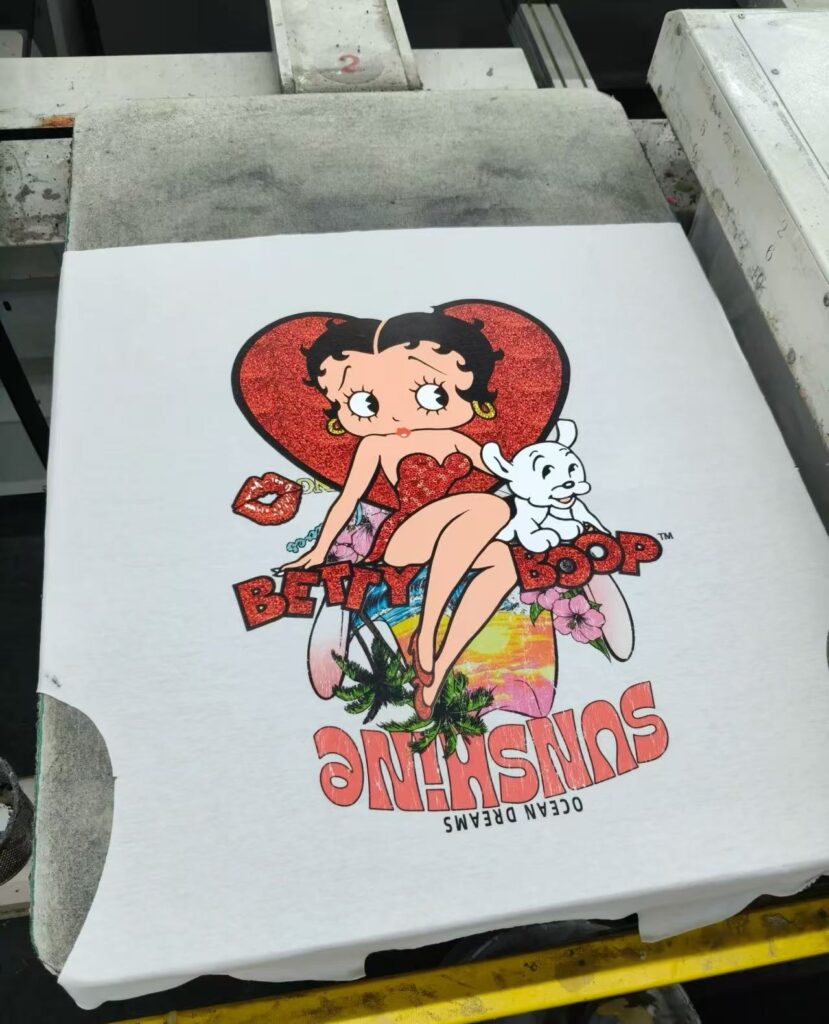
1.מה ההבדל הבסיסי בין תרכובת על בסיס מים לתרכובת דיו פלסטיזול?
בלב הוויכוח על דיו מבוסס מים ודיו פלסטיסול טמון ההרכב הבסיסי שלהם. הבנת זאת היא המפתח להבנת הסיבה לכך שהם מתנהגים בצורה כל כך שונה. דיו פלסטיסול הוא, כפי ששמו מרמז, דיו מבוסס פלסטיק לחלוטין. הוא מורכב משאריות PVC (פוליוויניל כלוריד) התלויות בפלסטייזר נוזלי, הפועל כחומר עזר. דיו זה אינו מכיל ממס שמתאדה, כלומר הוא עשוי לא להתייבש בטמפרטורת החדר. מסיבה זו, דיו פלסטיסול אינו חודר לסיבי הבד; במקום זאת, הוא נקשר מכנית לבד, ויוצר שכבת דיו עמידה וגמישה היושבת על גבי הבגד. זה יוצר מה שנקרא הדפס פלסטיסול, שלעתים קרובות יש לו תחושה מעט גומיית אך מציע גמישות מעולה.
מצד שני, דיו על בסיס מים לעומת דיו פלסטיסול. ההיבט העיקרי של דיו זה הוא מים, המשמשים כממס העיקרי לאגירת הפיגמנט. שלא כמו פלסטיסול, בזמן הדפסה עם דיו על בסיס מים, דיו המים נספג בסיבי הבד, ועוטף את הפיגמנט. כאשר הדיו מחומם לעיבוד, המים צריכים להתאדות לחלוטין, ומשאירים את הפיגמנט משובץ בתוך הבד עצמו. מערכת זו צובעת בעצם את חוטי הבד, וכתוצאה מכך נוצר הדפסה על בסיס מים שהיא עדינה למדי ונושם. ההבדל הבסיסי בין דיו אלה - אחד יושב על הקצה ואחד נספג - הוא מקור כל התכונות השונות האחרות שלהם, החל ממגע ועמידות ועד למורכבות תהליך ההדפסה.
הבדלים אלה בהרכב מכתיבים כיצד מטפלים בכל סוג של דיו בבית דפוס. יציבותו של דיו פלסטיזול הופך אותו לידידותי מאוד למשתמש, בעיקר למתחילים. ניתן להשאיר אותו על המסך למשך פרקי זמן ממושכים מבלי לחשוש מתייבש, מה שהופך אותו לאידיאלי להדפסה ארוכה או עבודות שעלולות להיקטע. לעומת זאת, מכיוון שדיו על בסיס מים מכיל מים, הוא מתחיל להתייבש ברגע שהוא נחשף לאוויר. תופעה זו, המכונה ייבוש בתוך המסך, יכולה להיות משימה גדולה, שעלולה לסתום את הרשת ולהרוס את ההדפסה. מדפסות המשתמשות בדיו על בסיס מים צריכות לעבוד במהירות וביעילות או להשתמש בתוסף מעכב ייחודי כדי להאט את זמן הייבוש. זה הופך את עקומת הלמידה עבור הדפסת משי על בסיס מים לתלולה מעט יותר, אך התוצאות האיכותיות לרוב שוות את הניסיון.
2.כיצד משתנה תהליך הדפסת המסך עם דיו על בסיס מים לעומת דיו פלסטיסול?
החווייה בהדפסה עם פלסטיסול, לעומת דיו על בסיס מים, היא ייחודית במינה. כשמדובר בהדפסת תצוגה, העמידות של דיו פלסטיסול הופכת אותו לסלחני במיוחד. מדפסת יכולה לבצע משימה, לבצע כמה הדפסות ניסיון, לקחת ארוחת צהריים ולחזור ולגלות שהדיו במסך עדיין בר ביצוע. איזון זה מפשט עבודות רב-צבעוניות ומאפשר זרימות עבודה פחות תובעניות וגמישות יותר. ניקוי דורש ממסים ייחודיים כדי לפרק את הדיו מבוסס ה-PVC, אך הטיפול בהדפסה קל. זוהי אחת הסיבות לכך שהדפסת תצוגה פלסטיסול הפכה לפופולרית בתעשייה במשך עשרות שנים; היא אמינה, צפויה וירוקה לייצור בקנה מידה גבוה.
אופן ההדפסה של דיו על בסיס מים דורש עניין ומהירות גדולים יותר. הסיכון המתמיד של ייבוש הדיו בתוך המסך מחייב את המדפסת לשמור על קצב קבוע. בכל הפסקה בהדפסה, יש להציף את המסך בשכבת דיו כדי למנוע מהאוויר לייבש את הרשת, ובהפסקות ארוכות יותר, יש לנקות את המסך לחלוטין. זה דורש יותר שקידה ותכנון. יתר על כן, הדיו עצמו יכול להיות דק יותר, מה שעשוי לדרוש גם מסך זיכרון בעל רשת גבוהה יותר כדי לשלוט על משקעי הדיו ולקצור פרטים יפים. אמנם זה אולי נשמע כמו טרחה, אומנים רבים ומותגים מובילים בוחרים בתוצאות הספציפיות של דיו זה, מתוך אמונה שהמאמץ הנוסף הוא מחיר קטן לשלם עבור מוצר סופי מעולה.
שיטות ההתקנה והפירוק מדגישות גם את ההבדלים בין דיו על בסיס מים לבין דיו על בסיס פלסטיסול. עבור דיו על בסיס פלסטיסול, מדפסות משתמשות לעתים קרובות במסכים ייעודיים ואף עשויות לאחסן מסך עם דיו בתוכה לפעולה חוזרת בעתיד הקרוב. הדיו מוחזר למיכל שלו, והמסך מנגב בעזרת סבון לחץ או ממיסים אחרים. עבור דיו על בסיס מים, ניקוי בדרך כלל קל יותר ברצפה - ניתן להשתמש במים עבור דיו מוגז - אך דיו יבש עשוי להיות קשה במיוחד, לפעמים בלתי אפשרי, להסרה מרשת המסך. זה הופך את הניקוי הקפדני והמיידי לחלק בלתי נפרד מהתהליך בעת שימוש בדיו על בסיס מים. סוג הדיו בו נעשה שימוש משפיע ישירות על זרימת העבודה כולה, מההכנה ועד למשיכת המגב הסופית והניקוי.
3.מה יוצר את התחושה ה"רכה" יותר של דיו על בסיס מים?
חוויית "היד החלקה" המבוקשת להפליא היא אחד מגורמי הקידום הגדולים ביותר לדיו על בסיס מים. חוויה זו היא תוצאה מיידית של האופן שבו הדיו מגיב עם הבד. כפי שצוין קודם לכן, החומר על בסיס מים נספג עמוק לתוך סיבי הבגד, הופך לאחד עם הבד במקום לשבת עליו. לאחר שהדיו מתייבש לחלוטין והבגד נשטף פעם אחת, ההדפס מרגיש רך במיוחד, כמעט כאילו הוא חלק מהבד המקורי. ניתן להעביר את היד על הדפס על בסיס מים וכמעט ולא להרגיש הבדל מרקמי. זה הופך את הבגד לנעים יותר ללבישה, מכיוון שהאזור המודפס נשאר קל ונושם.
בהערכה נוקבת, דיו פלסטיזול יוצר שכבת דיו מוחשית בקצה הבד. בעוד שניסוחי הפלסטיסול הנוכחיים רכים בהרבה מקודמיהם, להדפס פלסטיסול תמיד יהיה מרקם נפלא, מעט גומי. ניתן להרגיש את הגבול שבו ההדפס מתחיל ומסתיים. זה יוצר הדפס כבד יותר שיכול להרגיש נוקשה ולא תמיד נושם, מכיוון ששכבת הדיו אוטמת את אריגת הבד. אמנם זה לא תמיד רע - תחושה זו עשויה להיות אפקט סגנוני מועדף עבור עיצובים מסוימים - זוהי הסיבה מספר אחת לכך שאלה המחפשים בגדים איכותיים ונוחים חווים מעבר מלא לכיוון דיו מבוסס מים.
ההבדל בחוויה מורגש בעיקר בבגדים בצבעים בהירים, שבהם ניתן להשתמש בדיו אופנתי על בסיס מים במלוא הפוטנציאל שלו. הדיו מדפיס עם גוון דיו חצי-שקוף המאפשר למרקם הבד לחשוף, ומשפר את התחושה המוכללת והעדינה. עבור בגדים כהים יותר, השגת מגע רך זה דורשת סוג מיוחד של דיו הנקרא דיו פריקה, עליו נדבר בהמשך. בסופו של דבר, הבחירה בין שכבת דיו מוחשית לבין תחושה משולבת ורכה יותר היא אחת הבחירות הבסיסיות שעושים מותג או מדפסת בעת בחירה בין דיו פלסטיסול לדיו על בסיס מים.

4.מדוע דיו פלסטיסול הוא מועדף על כל כך הרבה בתי דפוס?
למרות המוניטין הגובר של דיו על בסיס מים, דיו פלסטיסול נותר סוס העבודה הבלתי מעורער של תעשיית הדפסת המסך, ומסיבה ראויה. היתרון הגדול ביותר שלו הוא ידידותיות למשתמש. העובדה שהוא אינו מתייבש בתוך התצוגה מפשטת את מערכת הדפסת המסך באופן משמעותי, ומפחיתה בזבוז ולחץ עבור המפעיל. זה הופך את ההדפסה עם פלסטיסול לקלה יותר למחקר וירוקה יותר לייצור בקנה מידה גדול. מדפסת יכולה להתמודד עם כמה מכונות דפוס ומשימות מורכבות בקלות רבה יותר הודות לכך שהדיו יציב וצפוי.
היבט חשוב נוסף הוא האטימות. דיו פלסטיסול אטום בהרבה בהשוואה למקבילו המבוסס על מים. משמעות הדבר היא שהוא יכול לכסות בדים בצבע כהה עם גוונים עזים וצבעוניים ביחידה אחת בשיטת הדפסה-הבזק-הדפסה פשוטה. השגת הדפס לבן עז על חולצת טריקו שחורה היא קלה בעזרת פלסטיסול. האטימות הגבוהה הזו הופכת את התאמת הצבעים, כולל התאמת צבעי פנטון ספציפית, למדויקת הרבה יותר. מערכות ערבוב לדיו פלסטיסול הן עדינות ביותר, ומאפשרות למדפסות ליצור כל צבע עם תוצאות עקביות וחוזרות. מכיוון שפלסטיסול מציע אמינות זו, זהו הדיו הנחשק ביותר עבור מדפסות תעשייתיות שצריכות להבטיח דיוק צבע עבור סמלי חברה ומוצרים ממותגים.
לבסוף, רבגוניות ועמידות הופכות את דיו הפלסטיסול להימור בטוח. הוא נדבק היטב למגוון רחב של סוגי בדים, הכוללים כותנה, פוליאסטר, בדים מעורבים ואפילו ניילון (עם התוסף הנכון). הדפסת פלסטיסול שעברה תהליך הכנה טובה היא עמידה ביותר ויכולה להחזיק מעמד זמן רב כמו הבגד עצמו, ולעמוד בכביסות אינסופיות מבלי לדהות או להיסדק. שילוב זה של קלות שימוש, צבעים עזים בכל בגד ועמידות גבוהה מבטיח שדיו פלסטיסול יישאר דיו מפורסם ומרכיב עיקרי בהדפסת בדים בשנים הבאות. תהליך התצוגה של פלסטיסול הוא בהחלט ירוק מכדי להתעלם ממנו.
5.מהם ההבדלים העיקריים בריפוי דיו על בסיס מים ודיו על בסיס פלסטיסול?
טכניקת הטיפול בדיו היא שלב חיוני בהדפסת מסך המבטיח את עמידות ההדפס ואת יכולת הרחצה שלו, וזהו תחום נוסף עם הבדל ניכר בין דיו על בסיס מים לפלסטיסול. כדי לייבש, דיו פלסטיסול צריך להגיע לטמפרטורה מסוימת, בדרך כלל בין שלוש מאות ל-330 מעלות פרנהייט (מאה וחמישים למאה שישים וחמש מעלות צלזיוס). החום לא יתייבש את הדיו; הוא ממיס את שאריות ה-PVC, מאחד אותן יחד עם הבד ליצירת שכבה חזקה ועמידה. תהליך זה מכונה הגעה ליובש מלא. אם הדיו לא מתיישר מספיק, הוא ייסדק ויישטף את הבגד. כל שכבת הדיו, מלמעלה ועד לחלק התחתון, פלסטיסול, צריכה להגיע לטמפרטורת ייבוש זו כדי ליצור קשר תקין.
ריפוי דיו על בסיס מים הוא מערכת מורכבת יותר, בת שתי רמות. ראשית, יש ללחוץ על כל חומר המים בדיו כדי להתאדות. רק לאחר שהמים נעלמו, הדיו הסוגר - הפיגמנט והחומרים המקשרים - יכול להגיע לטמפרטורת הטיפול שלו, שלעתים קרובות דומה או אפילו טובה יותר מזו של פלסטיסול. משמעות הדבר היא שמייבש מסוע צריך להיות ארוך יותר או לפעול לאט יותר עבור דיו על בסיס מים כדי לאפשר מספיק זמן הן לאידוי והן לריפוי. ריפוי הדיו הוא קריטי ביותר להדפסה עמידה. ריפוי לא נכון הוא הסיבה מספר אחת לכשלים בהדפסים על בסיס מים.
להבדל זה בשיטת הריפוי יש השלכות מהותיות על המכשיר וצריכת החשמל של בית הדפוס. בשל הצורך באידוי מים, ריפוי דיו על בסיס מים דורש לעתים קרובות מייבשים עם זרימת אוויר מאולצת כדי לסייע בפינוי הלחות. מייבשים אלה יכולים להיות יוקרתיים יותר ולצרוך יותר חשמל. הדיו צריך להיות מיובש לחלוטין, ובדיקת ריפוי מלא על דיו על בסיס מים עשויה להיות מסובכת יותר מאשר עם פלסטיסול. ניסיון מתיחה קל עובד היטב עבור פלסטיסול, אך ניסיון שטיפה הוא הדרך הסופית ביותר לאשר הדפסה על בסיס מים מיובשת היטב. מדפסות רבות מוצאות את הפשטות והמהירות של ריפוי פלסטיסול כיתרון עיקרי.
6.האם דיו פריקה זהה ל דיו על בסיס מים?
זוהי שאלה נפוצה, והתשובה היא גם כן וגם לא. דיו פריקה הוא סוג מיוחד של דיו הנכלל תחת קטגוריית הדיו על בסיס מים. הוא משמש להשגת הדפסים בהירים ורכים על בגדי כותנה כהים בדרגת 100%. דיו סטנדרטי על בסיס מים הוא שקוף למחצה וייתכן שלא יופיע היטב על חולצה כהה. דיו פריקה פותר בעיה זו בשיטה כימית חכמה. הדיו מנוסח עם חומר אבץ-פורמלדהיד-סולפוקסילט אשר, בזמן חימום, מופעל כדי להסיר את צבע היצרן מהבד.
כאשר הצבע המקורי מולבן מסיבי הבגד, הפיגמנט בתוך דיו הפריקה צובע מחדש את אותם סיבים. התוצאה הסופית היא חוויית יד רכה מאוד, מכיוון שההדפס הוא למעשה חלק מהבד, ולא עוד שכבת דיו מעל. ההדפס נושם כמו החולצה עצמה. עם זאת, דיו הפריקה עובד בצורה הטובה ביותר על סיבים צמחיים (כמו כותנה) שנצבעו בצבעים ריאקטיביים. הוא לא יעבוד כעת על פוליאסטר או חומרים סינתטיים אחרים, והתוצאות יכולות להשתנות בהתאם לצבע הייחודי בו משתמש יצרן הבגד.
אז, בעוד שדיו פריקה הוא דיו על בסיס מים, זהו סוג נפלא עם פונקציה ייחודית. הוא מאפשר למדפסות לשלב את החוויה העדינה של דיו על בסיס מים עם החיוניות הרצויה לבגדים כהים - תוצאה שקשה להשיג אחרת ללא בסיס עבה וכבד של דיו פלסטיסול. ההחלפה היא ריח נפלא בשלב מסוים של תהליך הייבוש והצורך בזרימת אוויר מדויקת. עבור יצרני ביגוד יוקרתיים רבים, דיו פריקה הוא המפתח לפיתוח מוצרים איכותיים שבולטים.
7.מהם השיקולים הסביבתיים בוויכוח על בסיס מים לעומת פלסטיסול?
ההשפעה הסביבתית היא היבט עצום בבחירה בין דיו על בסיס מים לבין דיו פלסטיסול. דיו על בסיס מים נתפס בדרך כלל כאפשרות ידידותית יותר לסביבה. הוא נטול PVC ופתלטים, שהם פלסטייזרים אשר מעלים חששות בריאותיים. ניתן לבצע את הניקוי של דיו נקי על בסיס מים במים, מה שמפחית את הצורך בממסים כימיים קשים בהדפסה. זה מאפשר סביבת עבודה טובה יותר וסילוק קל יותר של חומרי פסולת מסוימים. תפיסה זו כדיו "ירוק" יותר היא גורם מרכזי במגמת העלייה לדיו על בסיס מים בתעשיות האופנה והקמעונאות.
עם זאת, התווית "הירוקה" אינה תמיד שחורה ולבנה לחלוטין. בעוד שדיו פלסטיסול אכן מכיל PVC, פורמולות מודרניות פותחו כך שיהיו נטולות פתלטים ונחשבות בטוחות בזמן שהן מטופלות ומתקשות היטב. האתגר הסביבתי העיקרי בשימוש בדיו פלסטיסול נובע מתהליך הניקוי, הדורש שימוש בממסים מבוססי נפט. סילוק ומיחזור נאותים של ממסים אלה הם קריטיים כדי להפחית את השפעתם הסביבתית. יתר על כן, תהליך הייבוש של דיו פלסטיסול לרוב מהיר יותר ודורש פחות אנרגיה מאשר דיו מבוסס מים, וזהו גורם בבחירתו מבחינת צריכת חשמל.
חשוב גם לציין שלא כל דיו על בסיס מים ודיו על בסיס פלסטיסול נוצרים זהים. חלק ממערכות הדיו על בסיס מים מכילות ממסים נלווים כמו פורמלדהיד או דורשות תרכובות כימיות אגרסיביות ולא ידידותיות לסביבה לניקוי אם הדיו מתייבש בתוך המסך. הדפסה אחראית תביא בחשבון בקפידה את כל מחזור החיים של הדיו המשמש, החל מהרכבו ועד לתרכובות הכימיות הנדרשות לניקוי והכוח הנדרש לייבוש. בסופו של דבר, למרות שלדיו על בסיס מים יש לעתים קרובות צד, קבלת החלטה ירוקה באמת דורשת בדיקה מעבר לתווית וידע של המוצרים והנהלים המדויקים בהתאם למשימות הדפסת המסך שלכם.
8.כיצד לבחור את הדיו המתאים לסוגי בדים שונים?
סוג הבד עליו אתם מדפיסים הוא אחד הגורמים החשובים ביותר בבחירת הדיו המתאים. בחירה זו יכולה לקבוע או להרוס את אפקט ההדפסה הסופי שלכם. דיו פלסטיסול הוא אלוף הרבגוניות. מכיוון שהוא יוצר קשר מכני על פני השטח, ניתן להשתמש בו להדפסה על מגוון רחב של חומרים. הוא פועל במיוחד על כותנה 100%, פוליאסטר ותערובות כותנה/פולי 50/50 המפורסמות תמיד. עם תוספת של תוסף זרז, ניתן להשתמש בדיו פלסטיסול גם להדפסה על ניילון, ספנדקס וחומרי בד סינתטיים אחרים, מה שהופך אותו לדיו המועדף עבור חולצות ספורט ומוצרי קידום מכירות רבים.
דיו על בסיס מים, כולל גרסת דיו הפריקה שלו, הוא סלקטיבי יותר לגבי שותפיו. הוא משחק עם סוגי בדים טבעיים איכותיים כמו כותנה 100TP4T, קנבוס ובמבוק. הסיבה לכך היא שהדיו רוצה להיספג על ידי הסיבים, וסיבים טבעיים סופגים במיוחד. בעוד שניתן להדפיס דיו על בסיס מים נפוץ על תערובות מסוימות, החיוניות ועמידות הכביסה עלולים להיפגע מכיוון שהדיו לא ייקשר לסיבי הפוליאסטר המלאכותיים. בעת הדפסה על תערובות עם דיו על בסיס מים, ההדפסה לרוב מקבלת מראה דמוי עור, לא אופנתי או "אדמדם", דבר שיכול להיות אסתטי ראוי אך לא תמיד מושלם אם רוצים צבע רווי ותוסס לחלוטין.
לכן, כלל האצבע הוא פשוט: אם אתם מדפיסים על כותנה 100% ורוצים הדפסה רכה ונושם, דיו על בסיס מים הוא עדיפות מעולה. אם אתם מדפיסים על כותנה כהה 100% וזקוקים לאותה תחושה עדינה, דיו פריקה הוא הבחירה הנכונה. עבור כמעט כל השאר - פוליאסטר, תערובות 50/50, טרי-בלנדים ובדים סינתטיים ייחודיים - דיו פלסטיסול הוא הבחירה האמינה והחזקה ביותר. הדיו הרצוי צריך להתאים היטב לבד כדי להבטיח שההדפסה לא רק תיראה טוב אלא גם תחזיק מעמד עד לבגד.
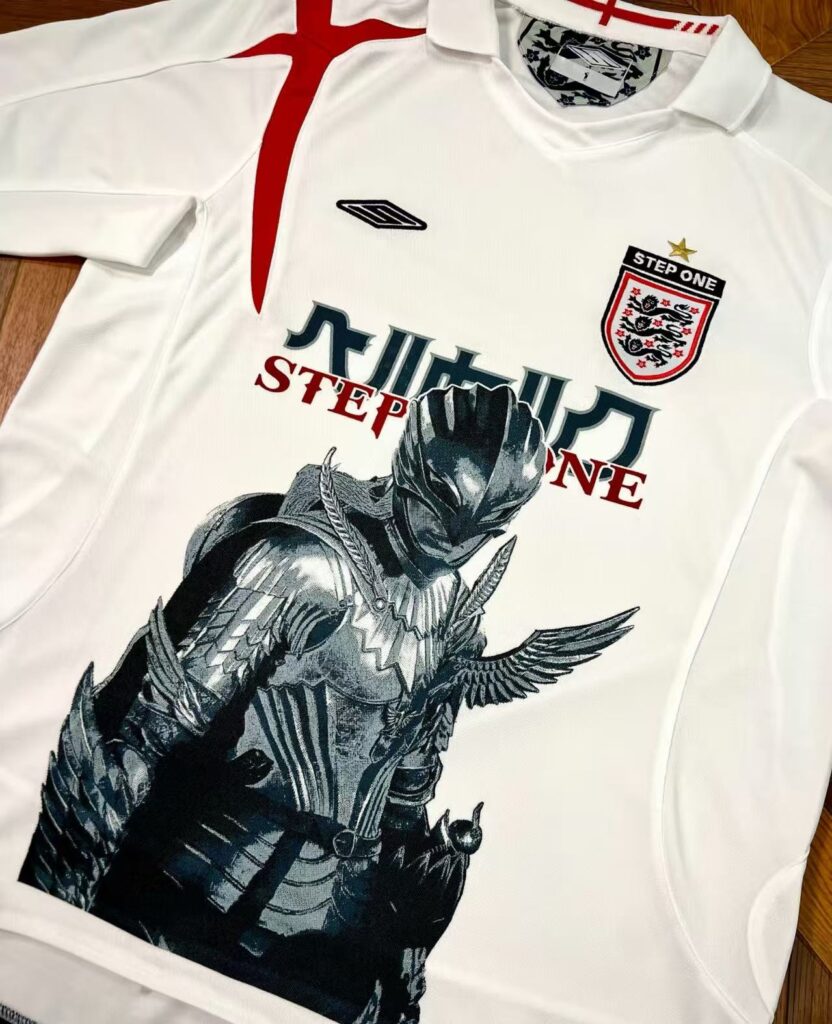
9.אז, איזה דיו מתאים לפרויקט שלי?
לאחר בחינת הצדדים הרבים של הדיון בין דיו על בסיס מים לבין דיו פלסטיסול, הבחירה האחרונה מסתכמת בחלומות הפרויקט הייחודיים שלכם. אין רק דיו "איכותי" להדפסת משי; יש רק את הדיו המתאים למשימה בהישג יד. אתם רוצים לזכור את התחושה המועדפת, את הבד, את עוצמת הצבע הנדרשת ואת כישורי הייצור שלכם. האם אתם שואפים להדפס איכותי, עדין להפליא ונושם עבור קו אופנה? דיו על בסיס מים הוא כנראה התשובה שלכם. האם אתם רוצים להדפיס 500 סמלים סגולים מבריקים על אפודי בטיחות פוליאסטר שחורים? דיו פלסטיסול הוא בהחלט הכלי הנכון.
השאלה של דיו על בסיס מים לעומת דיו פלסטיסול אינה שאלה כללית מתקדמת, אלא שאלה של ידע על נקודות החוזק שלה. פלסטיסול מגיע עם אמינות וקלות שימוש, מה שהופך אותו למתאים לעבודות בנפח גבוה, ללבוש ספורטיבי ולהשגת הדפסים אטומים על בגדים כהים. הדיו מדפיס עם חיוניות צפויה. דיו על בסיס מים מספק איכות גבוהה, מגע עדין והוא ידידותי יותר לסביבה, מה שהופך אותו לאידיאלי לבגדים דקים במיוחד על בדים טבעיים. למדריך מפורט ואפשרויות מוצר, משאב כמו דיו על בסיס מים - screenprinting.com יכול להיות שימושי.
בסופו של דבר, חברות דפוס רבות משתמשות בשני סגנונות הדיו בחנויות שלהן. הן ממנפות את הגמישות של דיו פלסטיסול עבור רוב הציורים המסחריים שלהן, תוך שהן מציעות דיו על בסיס מים ודיו פלסטיסול כחלופות ללקוחות, ומשתמשות בדיו על בסיס מים עבור פרויקטים איכותיים הדורשים תחושה רכה יותר. על ידי הבנת ההבדל האמצעי בין דיו זה, אתם מעצימים את עצמכם להתקדם מעבר לדיו הפשוט לעומת ויכוח וליצור החלטה מושכלת ואסטרטגית שתשפר את עבודת הדפוס שלכם ותספק בדיוק את מה שאתם רוצים.
10.נקודות מפתח שכדאי לזכור:
- דיו פלסטיזולדיו על בסיס פלסטיק המונח על קצה הבד. הוא נוח למשתמש, אטום למדי, בהיר על בגדים כהים, ועובד כמעט על כל סוג בד. הוא מטפל כאשר הוא מגיע לטמפרטורה מסוימת (למשל, 320°F).
- דיו על בסיס מים: דיו שבו מים הם הממס העיקרי, המאפשר לו להיספג ולצבוע את סיבי הבד. הוא מציע תחושה רכה ונושמת הרבה יותר. הוא מתאים לבדים טבעיים בצבעים בהירים כמו כותנה 100TP4T.
- ריפוי הוא קריטי: שיטת הריפוי היא שונה וחשובה לשניהם. פלסטיסול צריך להגיע לטמפרטורה קבועה. דיו על בסיס מים צריך קודם כל להתאדות במים, ולאחר מכן הדיו הסופי צריך להתקשות.
- תחושה וגימור: אם אתם מעוניינים ביד חלקה שבה לא תרגישו את הדיו, בחרו דיו על בסיס מים או דיו עם פריקה. אם אתם רוצים הדפסה בהירה, נועזת ועמידה לאורך זמן עם מרקם עדין, השתמשו בפלסטיסול.
- הבד הכי חשוב: הרכב הבגד שלך הוא הגורם החשוב ביותר. דיו על בסיס מים מצטיין על כותנה 100%. דיו פלסטיסול הוא רב-תכליתי, ועובד בצורה אמינה על כותנה, תערובות וסינתטיות.
- אין דיו "טוב" אחד: הדיו המתאים תלוי במשימה. הבנת המאפיינים של דיו פלסטיסול ודיו על בסיס מים מאפשרת לך לבחור באיכות הגבוהה ביותר לקבלת תוצאות הדפסה מעולות בכל פעם.

